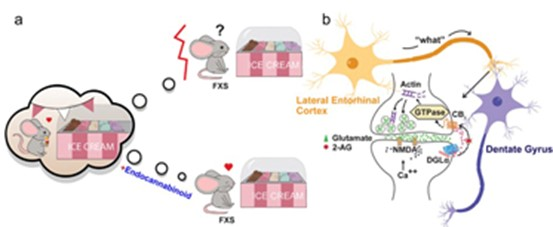
Treating a novel plasticity defect rescues episodic memory in Fragile X model mice. Molecular Psychiatry, 23 (8):1798-1806.
Episodic memory, a fundamental component of human cognition, involves the encoding of events into narrative sequences about what happened, where particular features occurred, and the order in which they appeared. The projection from entorhinal cortex (LEC) to the dentate gyrus (DG) plays a central role in the processing of episodes. Individuals with intellectual disability including autism spectrum disorders (ASDs), show specific deficits in the acquisition recall and integration of episodes.
We report the first evidence that episodic memory is significantly impaired in autism in the Fmr1-knockout (KO) mouse model of Fragile X syndrome. By using chemogenetic, electrophysiological and pharmacological techniques, we found the unusual form of synaptic plasticity expressed by the LPP (lppLTP) was profoundly impaired in Fmr1-KOs, which are related to NMDARs and the endocannabinoid signaling. The endocannabinoid 2-arachidonoylglycerol (2-AG) activates the FAK/ROCK signaling pathway via CB1 receptors in LPP synapses to promote glutamate release. Activation of the 2-AG/CB1 pathway or specific activation of the LEC-DG circuit is proved sufficient to restore the impaired lppLTP and normalize learning in a serial cue paradigm.